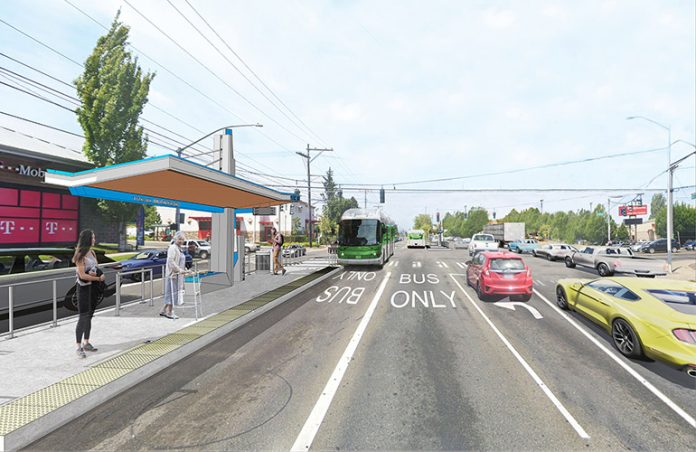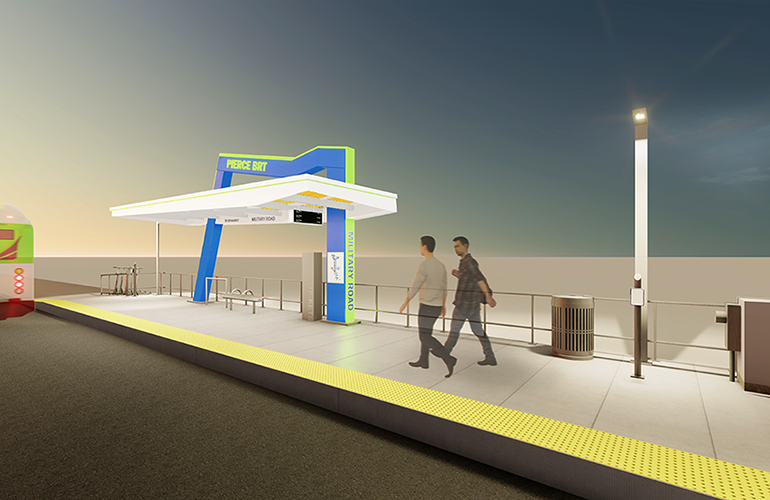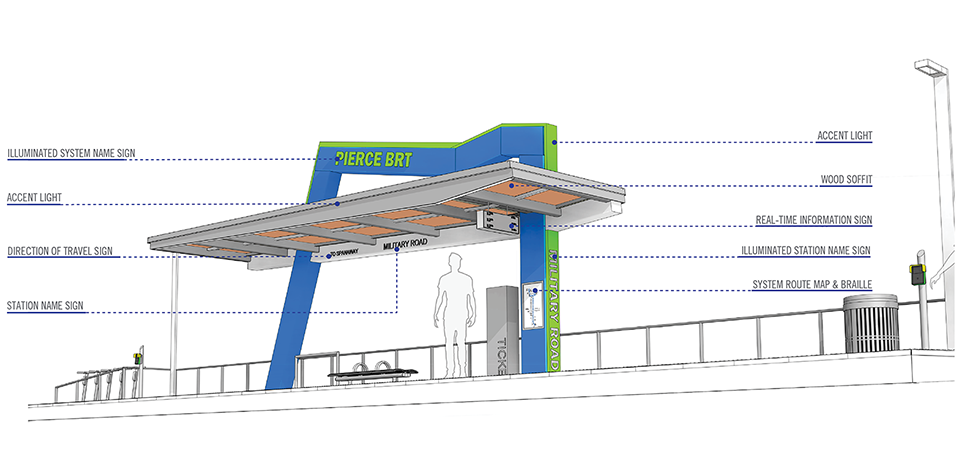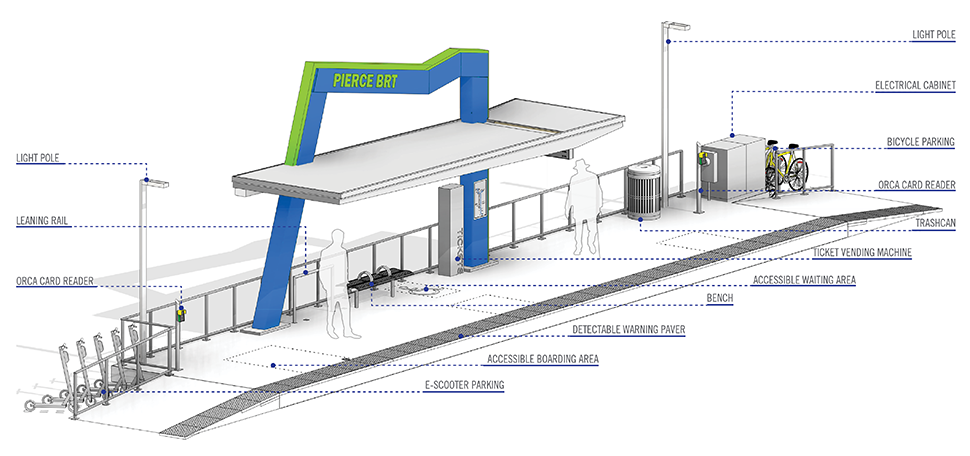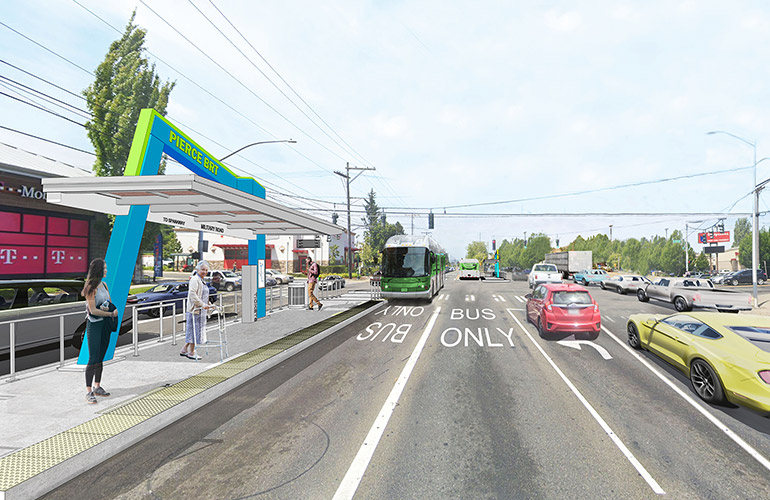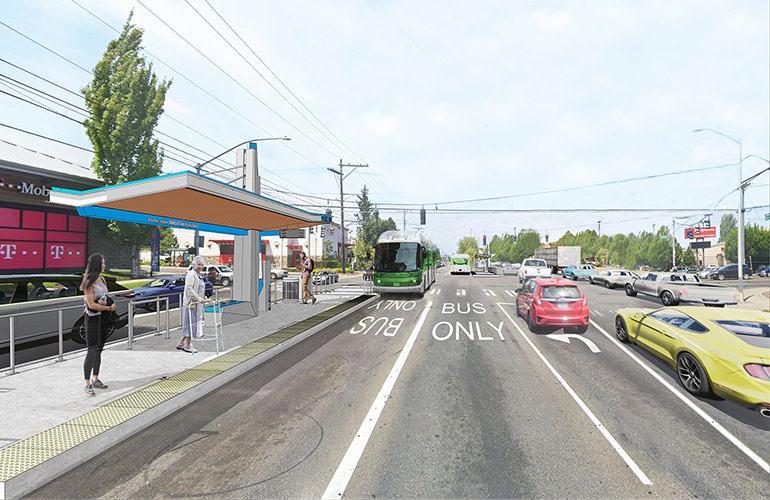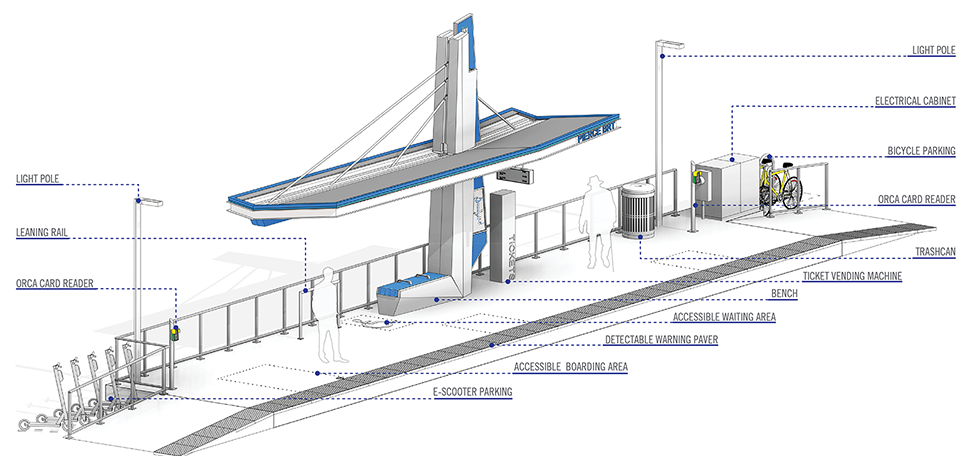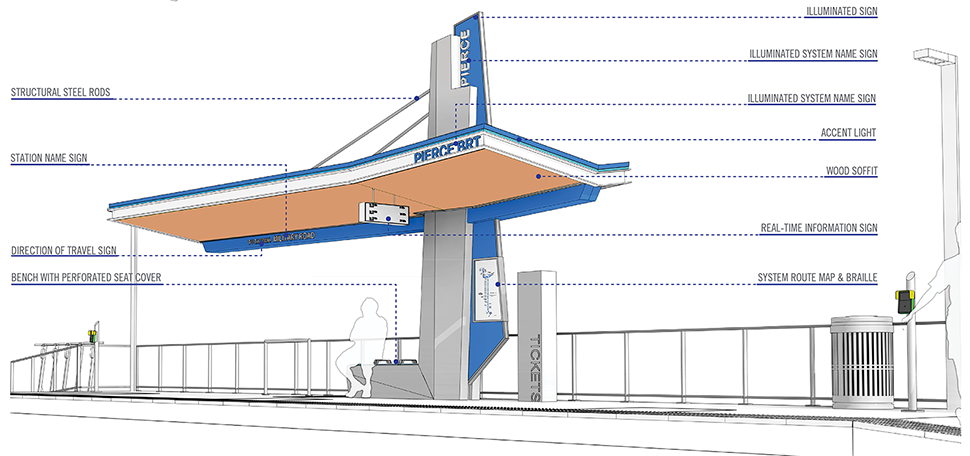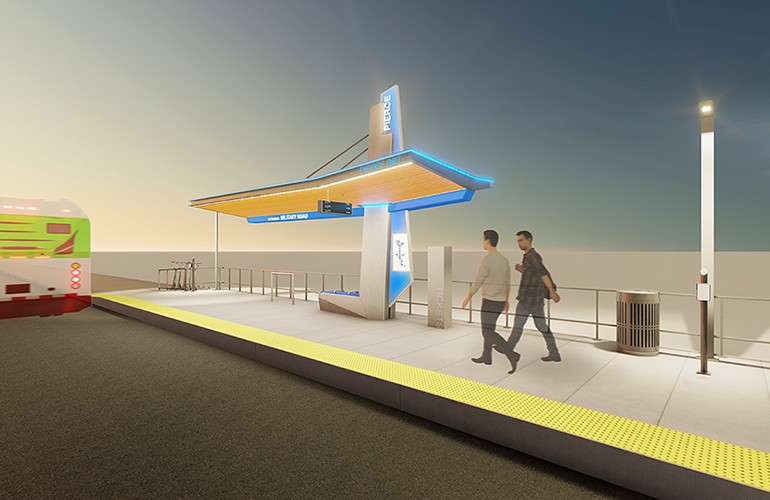Pierce Transit has moved into the design phase for the transit agency’s signature bus rapid transit (BRT) project. The project is set to deliver a 14.4-mile BRT corridor stretching from Downtown Tacoma to Spanaway with much of BRT line having exclusive or near exclusive right-of-way. As with other regional BRT projects, transit signal priority, off-board fare payment, all-door boarding, and quality stations will be provided to improve passenger experience and speed buses along the corridor.
Pierce Transit has settled on a mixed-BRT approach with some portions of the corridor in mixed traffic and some in dedicated transit lanes. Generally speaking, the corridor will run along Pacific Avenue/SR-7, but in Downtown Tacoma the corridor will jog to Tacoma Dome Station and run on Market Street. The deviation is an odd choice since it will be largely duplicating other service while inflating project cost, but the Market Street corridor is at least unique.
The corridor is currently served by Route 1, which is the highest-ridership route in the Pierce County with 1.1 million rides annually. The BRT upgrade is expected to more than double ridership.

Stations will be typically on the right-hand side of the street requiring passengers to load and unload from the right-hand side of buses. The exception is some stations planned for locations in the median of Pacific Avenue/SR-7. In these cases, stations will be situated in such a way that they are located toward the left side of through lanes and paired with an exclusive lane left of the station platforms. Significant rechannelizations at intersections will be necessary to accommodate this type of design. The location of the stations will enable riders to reach platforms at marked and improved crosswalks, much like the Seattle Streetcar stations on S Jackson St in Seattle.
Pierce Transit has devised two different station options. Aesthetically, the station design both present modern interpretations of local iconic features found in Pierce County. The first station design option mimics the E 21st St Bridge in Tacoma. That bridge straddles the south end of the Thea Foss Waterway using a modern suspension technique. The second station design takes inspiration from Mount Rainier in the shape of a mountain for the pylons.
Mount Rainier Station Concept
Generally, the two station designs provide a similar amount of canopy coverage and will feature all of accoutrements riders have come to expect from BRT stations in the region. Stations will be outfitted with full platforms, ticket vending machines, real-time arrival signs, wayfinding and rider information boards, ORCA card reader kiosks. Other amenities will include bike parking (including storage) and e-scooter parking, seating, prominent lighting, and trash receptacles.
Suspension Bridge Station Concept
Next Steps
Since the project has entered the 30% design phase, Pierce Transit has begun to dig deeper into the kind of right-of-way improvements (30% design rolls 1, 2, 3, and 4) that will need to be made, such as the size and location of stations, new curb bulbs, and rechannelizations necessary to implement the project. Property owner along the corridor that might be affected by the project will be contacted by the transit agency to work out the details, and some property acquisitions may be necessary to improve the right-of-way and deliver stations.

Pierce Transit has indicated that $90 million in grants have already been allocated for the project so far. Funding from Sound Transit 3 has delivered $60 million in secured funding with other grants covering the remaining balance. Additional funding, however, is still needed to complete the project with $150 million being sought from the federal government.
Environmental review and design work is expected to be completed by the end of next year. Construction could then follow with a possible launch of BRT service in 2023 if all funding comes through, but that still remains to be seen given the current economic and public health circumstances from the pandemic. In the meantime though, an online survey on the station design, station amenities, and onboard amenities is open for feedback.
Stephen is a professional urban planner in Puget Sound with a passion for sustainable, livable, and diverse cities. He is especially interested in how policies, regulations, and programs can promote positive outcomes for communities. With stints in great cities like Bellingham and Cork, Stephen currently lives in Seattle. He primarily covers land use and transportation issues and has been with The Urbanist since 2014.

